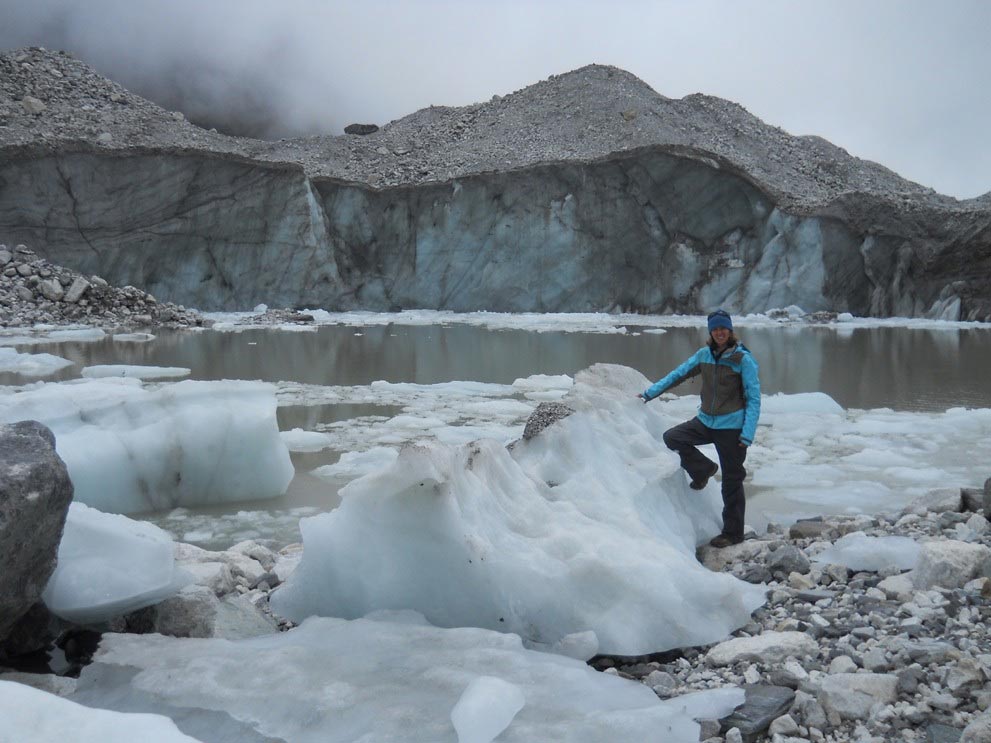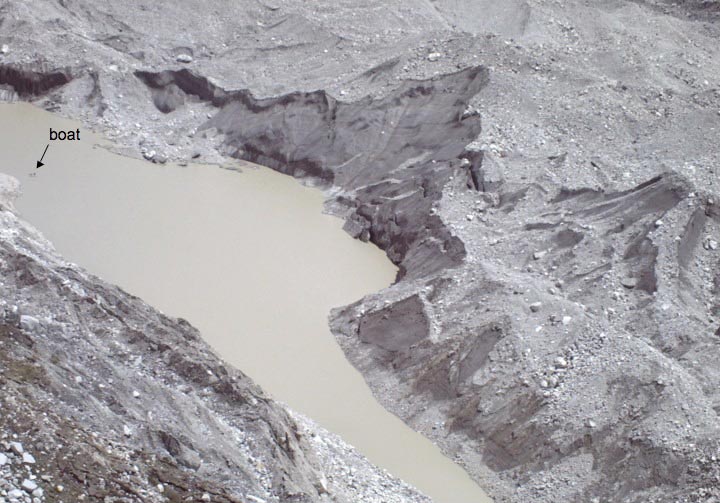Glacial Lake's Disappearing Act Caught on Film


Updated Thurs. Dec. 8 at 7:19 a.m. ET
SAN FRANCISCO — In mere days this June, a glacial lake in the Himalayas lost the equivalent of 42 Olympic-size swimming pools of water and then slowly refilled. And for the first time, scientists caught this disappearing-reappearing trick on camera.
More and more lakes are dotting the tops of glaciers in the Himalayas, forming a mysterious system through which meltwater can move. These lakes are important because as they grow and shrink, they expose bare ice walls, which melt twice as fast as the debris-covered ice that makes up much of Himalayan glaciers.
"You could think of these lakes as being cancers that are consuming the glacier," Ulyana Nadia Horodyskyj, a doctoral candidate at the University of Colorado, Boulder, said here today (Dec. 7) at the annual meeting of the American Geophysical Union.
Horodyskyj and her colleagues have been installing spycams to get a closer look at these cancers, rappelling down glacial valley walls to install time-lapse cameras that take hourly pictures of the glacier below. [Photos: Glaciers Before & After]
This June, one of their cameras caught an unprecedented look at a lake on top of the Ngozumpa Glacier in Nepal suddenly losing a massive amount of water and then refilling much more slowly. In one day, the lake lost a staggering 1.76 million cubic feet (50,000 cubic meters) of water. The next day, another 1.94 million cubic feet (55,000 cubic meters) disappeared.
The lake gradually refilled with water from farther up the glacier, Horodyskyj said, but not enough to replenish what it had lost: Only about 1.76 million cubic feet (50,000 cubic meters) of water, the amount lost the first day, flowed back into the lake. The refill was slow, taking about five days. [Video of lake draining and refilling]
Get the world’s most fascinating discoveries delivered straight to your inbox.
Those measurements mean that the lake lost 42 Olympic-size pools worth of water in two days. In comparison, typical meltwater runoff from the glacier in that time would be 16 Olympic-size pools.
The sudden lake drain is likely caused by shifting ice opening a crevasse, or perhaps by massive amounts of water pressure opening cracks in the ice of the glacier below, Horodyskyj told LiveScience. The water that refills the glacier comes from farther up the mountain.
"Think about two bathtubs connected via a pipe," she said, explaining that the lakes form a similar network. On the Ngozumpa Glacier alone, she said, there are about 200 lakes perched on the ice. Water flow in one lake can affect others, and the goal of Horodyskyj's work is to learn how this system fits together.
Understanding the melting of Himalayan glaciers is important, because the populated valleys below these rivers of ice are vulnerable to floods from glacial melt. High glacial lakes dammed by dirt or ice can erupt from their confines, causing a flash flood known either as a glacial lake outburst flood or a "mountain tsunami."
Lakes on top of glaciers regularly fluctuate in surface size and volume, Horodyskyj said, though they are becoming larger and more common as the climate warms. The lake that her cameras caught shrinking and re-growing in June has tripled in size in three years, growing from one football field in area to three.
Editor's Note: This article has been updated to correct the spelling of the researcher's last name and to correct metric conversions.
You can follow LiveScience senior writer Stephanie Pappas on Twitter @sipappas. Follow LiveScience for the latest in science news and discoveries on Twitter @livescience and on Facebook.

Stephanie Pappas is a contributing writer for Live Science, covering topics ranging from geoscience to archaeology to the human brain and behavior. She was previously a senior writer for Live Science but is now a freelancer based in Denver, Colorado, and regularly contributes to Scientific American and The Monitor, the monthly magazine of the American Psychological Association. Stephanie received a bachelor's degree in psychology from the University of South Carolina and a graduate certificate in science communication from the University of California, Santa Cruz.



